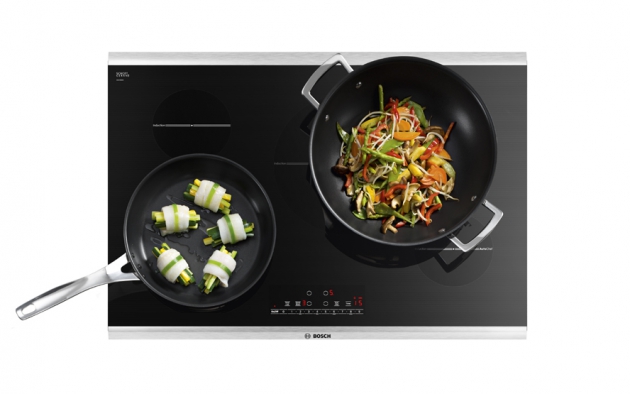The kitchen is one of the most important rooms in the home. You start your day in the kitchen, with breakfast and a hot cup of coffee, it is a place to gather for family dinners and can even be the venue for entertaining friends. While you may not consider saving energy when you’re preparing a meal, the abundance of appliances and frequent activity means that when you can make energy savings, it can have a big impact on your home. So, here we’ll explore five great ways you can save energy in your kitchen.
Upgrade to an Induction Cooktop
Induction technology uses magnets to directly conduct heat through pots and pans. This differs from the focused heat produced by a conventional cooktop burner. Each induction burner has a coil that generates a magnetic field that directly heats a ferromagnetic pot or pan placed on top of the surface. This provides more concentrated heat, and according to Department of Energy research, induction is 12% more efficient compared to a standard cooktop.
Keep Your Refrigerator Stocked
Refrigerators top the list of the most energy hungry appliances in the average home. This is logical as a refrigerator needs to continually run to keep your food cold. Unfortunately, this continuous use takes its toll, so you need to ensure your refrigerator is not outdated. According to Energy Star, if your refrigerator is fifteen years old or more, it is likely to be highly inefficient and using excessive amounts of energy.
Even if you have a brand new refrigerator, you can boost its efficiency by keeping it well stocked. While you don’t want to overstuff your refrigerator, the more items stored, the less air to be chilled. You also need to be wary about keeping the refrigerator door open, as this will allow warm air to enter, which requires energy to cool.
Fill Your Dishwasher
Dishwashers are another type of appliance that can use a great deal of energy. Federal standards continue to reflect new efficiency demands for dishwashers, so each model uses as little amount of energy and water as possible. This has lead to modern dishwashers being highly efficient compared to ones from ten or twenty years ago. Modern dishwashers use 4-6 gallons of water per cycle compared to 10 gallons on a model from the 1990s.
Unfortunately, even the most efficient dishwasher can waste energy and water if it is not full during a cycle. You can avoid wasting water and energy by only using your dishwasher when you have a full load, or using the half load setting for smaller loads.
Use Your Oven Convection Setting
Data from the California Consumer Energy Commission highlights that an oven convection setting can use 20% less energy compared to bake settings. Most modern ovens feature a convection setting that can save energy and produce more even cooking. The convection fan blows hot air throughout the oven cavity to cook food more evenly, efficiently and faster.
Identify Your Energy Vampires
Your kitchen is likely to contain a number of appliances that use “phantom loads” of energy. This means that these appliances draw power even when not in use. These appliances are known as “energy vampires” can cause a significant energy drain over time, so they should be identified and unplugged. Good examples of these appliances are toaster ovens, microwaves, and portable coffee makers.
Identifying an energy vampire appliance can be tricky, but you should look for appliances that have lights, a blinking indicator or a digital clock. You can also use a kilowatt meter to test the energy use of appliances not in use. According to Department of Energy estimates, a houseful of energy vampires could add up to $200 in energy bills each year.
If you would like to improve the energy efficiency of your kitchen, you can explore your options with this collection of High Efficiency kitchen appliances, or speak to a home appliance expert for a more specialist service.

